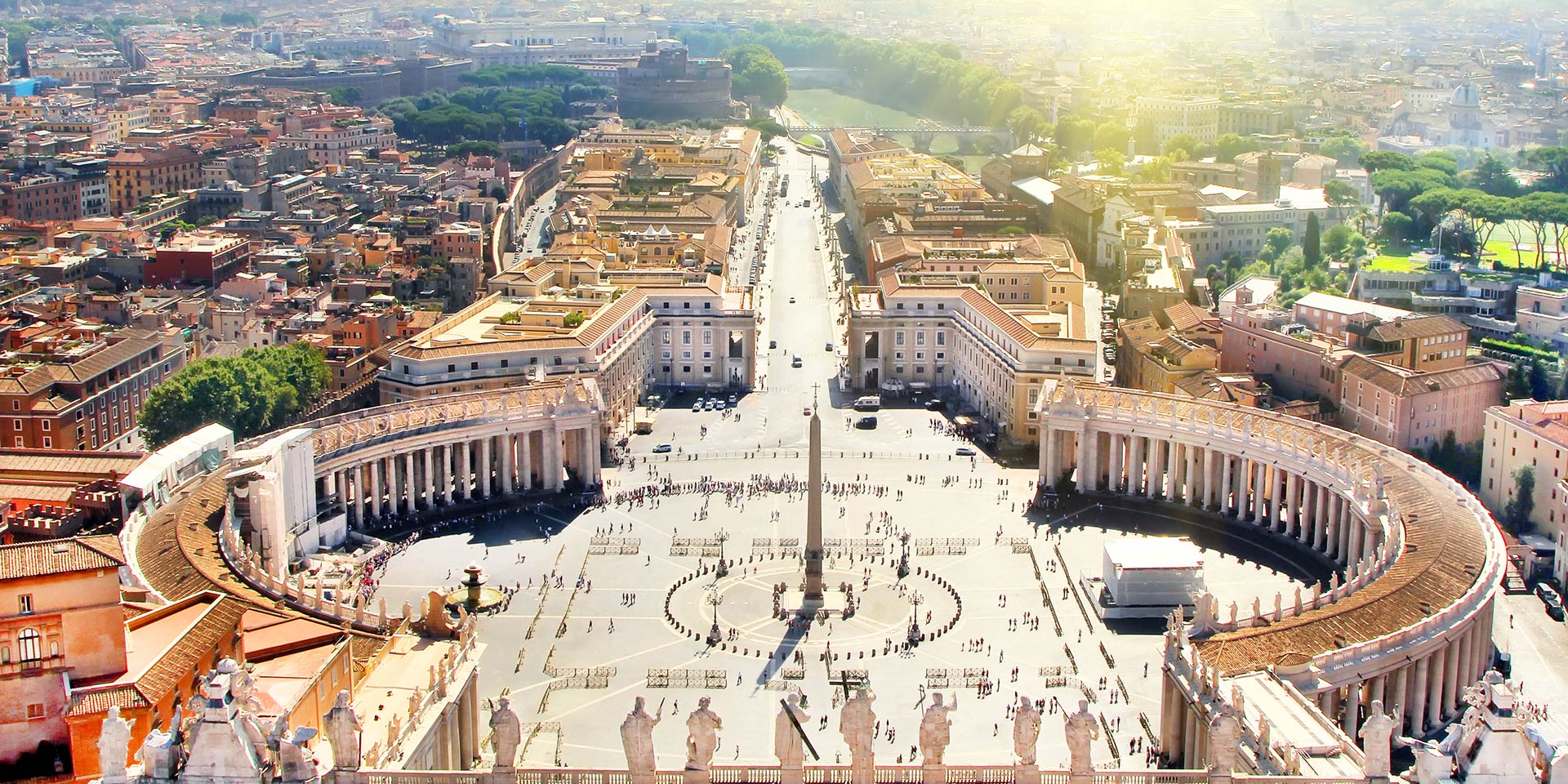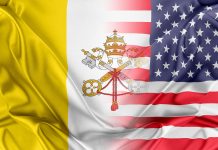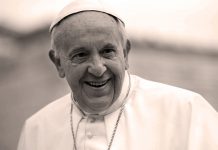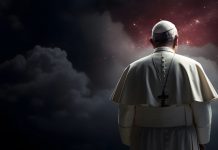This topic seems to be a matter of picking through the rubbish in order to survive. Who cares about Protestant protest today? Anti-Catholicism, like anti-Protestantism, represents natural and culturally legitimate attitudes that can be judged by their motivation, spirit and content—aspects that are apparently obscure but, when examined, become very transparent.
Terms such as the above need no explanation. We all use the prefix “anti-” in various cultural, political or religious disputes because we feel the need to assert our views and ideals against those of others. “Anti-” is perfectly normal in everyday life. For example, we put anti-skid tyres on our cars because we don’t want to drive through the crash barrier; we install anti-theft devices to keep kleptomaniacs out. You can’t live without “anti-“.
Catholic and non-Catholic
Catholicism is the Roman Catholic Christian denomination, which has existed separately since the schism of 1054. However, even before then, the Church in its unitary structure was called “Catholic”, meaning “whole” or “universal”, referring to the great ecumenical synods (councils) that established the unity of the imperial and mediaeval Church. In this sense, the Catholicity of the Church is opposed to any form of dissent, as opposed to schism and sectarianism—division along doctrinal or theological lines.
Before the Schism in 1054, the church everywhere, in the West and in the East, was theoretically “whole” (Catholic) and “righteous” (Orthodox)—only theoretically, because in reality there had been tensions and oppositions between East and West since the 2nd century.
The first schisms actually occurred in the 5th century, when most of the Middle Eastern churches in Syria-Palestine, Armenia, Mesopotamia, Persia, India, Egypt and Ethiopia broke away from the imperial church, ostensibly because of differences that were theological subtleties but with deeper political and religious aspects. However, even if the Eastern Schisms had not occurred, the ancient Orthodox-Catholic Church was already beset by dissident currents and heretical or sectarian movements, suggesting that unity was a traditional ideal that was only partially achieved and mainly by political means.
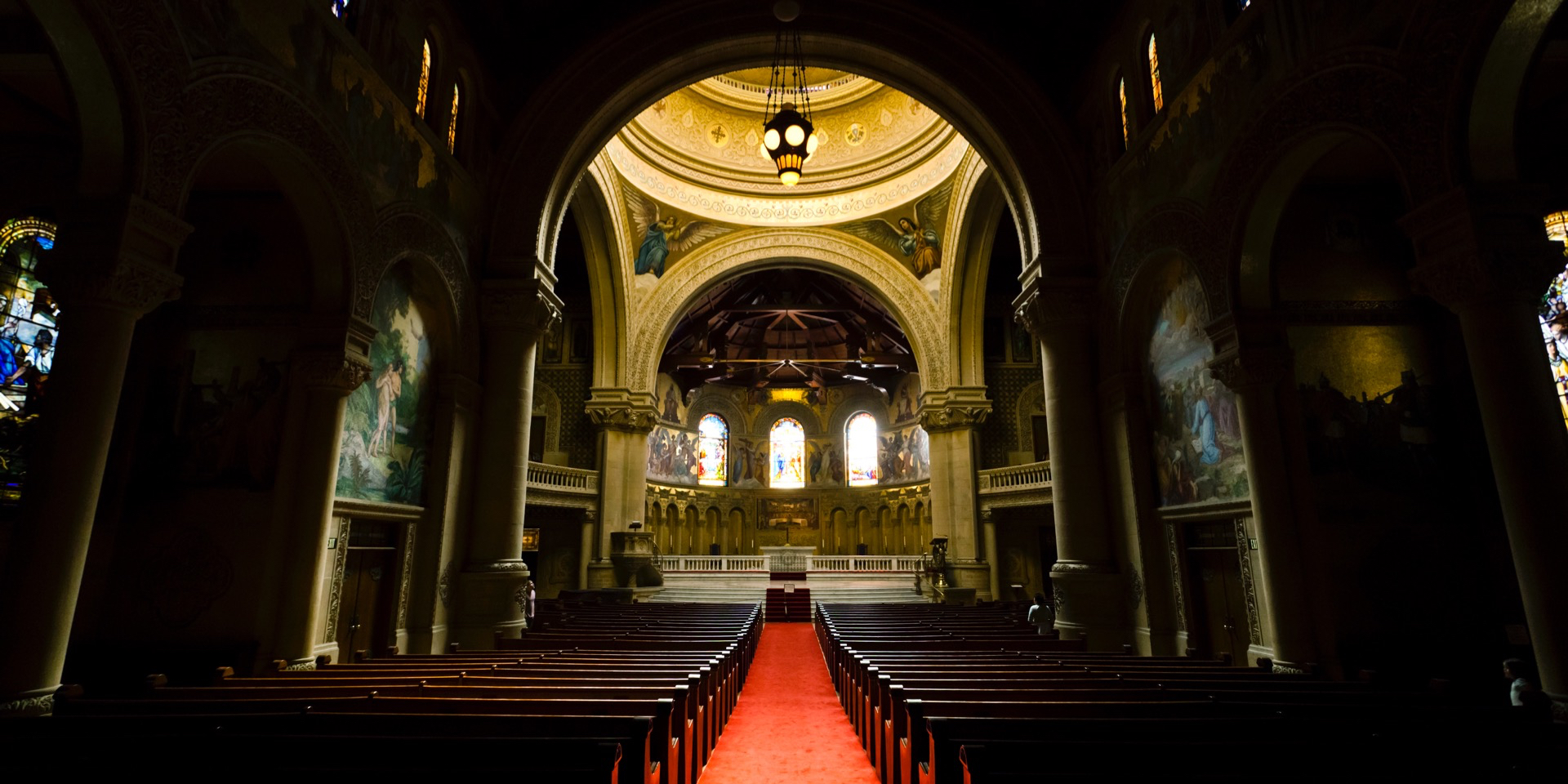
Since the apostolic generation, the Church had been divided between the Judaizers (conservatives or traditionalists, later called Ebionites), for whom the Church was the main Jewish sect, and the “paganizers”, liberals who fought for the universal ideal of the Church, denying the Jewish specificity of Christianity and borrowing elements of Greco-Roman and Eastern culture in their theology and practice. They were known under the general name of “Gnostics”, in different varieties: Nicolaitans, Marcionites, Valentinians, Mandaeans, Manicheans, etc., whose influence should not be underestimated. These currents often formed unexpected configurations: there were also Judaising Gnostics, just as, later on, the paganised Church retained some Judaising vestiges and became increasingly traditionalist, transforming the latest borrowings and innovations into long-established dogmas.
In the struggle against heresy, episcopal authority increased from the second century onwards, so that although the Church did not yet have mediaeval archbishops, metropolitans, patriarchs, and popes, each bishop was given a special authority unknown in the time of the apostles: (a) bishops became, in a special sense, Christ’s representatives; (b) bishops acquired, in a special sense, the authority of the Church’s teacher (magisterium); (c) bishops became the guarantor and expression of the Church’s unity and authority (to disagree with a bishop was to disagree with Christ and the Church); (d) bishops received the unwarranted title of pope (“father”)[1].
The first documented bishops were Heraclas of Alexandria (†248) and Marcellinus of Rome (†304). From the 6th century onward, the title of pope was reserved exclusively for the bishop of Rome. However, the repetition of this claim in 1073 shows that there were still bishops who claimed the title of Pope. In fact, the Patriarchs of Alexandria still bear the title of Pope today.
A Protestant is not one who protests against a bishop or against a church with universal and eternal claims. The spirit of Protestantism, which includes the condemnation of all those pagan doctrines and practices that have taken the place of the Gospel of Christ in the Church, did not emerge with Luther’s Reformation in 1517. Throughout the Middle Ages, there were quasi-Protestant reactions to the abuses of the official church.
The historical roots of anti-Catholicism
As we all know, the major theological and cultic borrowings and innovations of the Church came in the century of Constantine the Great and the generations that followed. As the pagan masses were forced into Christianity, because Christianity had become the favoured, then obligatory religion of the Roman Empire, Christianity began to be beset by needs it had never had before. As a result, many new cults were born: of the dead, of saints, of the Virgin, of relics, of crosses, of candles, of painted or carved faces, of holy water, of holy places, of holy gestures and signs, of holy mysteries, of liturgy, of calendar feasts, of the priesthood and priestly vestments, etc.
These innovative and critical aspects could not fail to provoke reactions from the people of the Church, and they did[2].
During the era of the “triumphant church”
Around the year 360, the priest Aerius of Sebaste (Anatolia), in line with the New Testament, spoke out against the superiority of the bishop over the presbyter, opposed the cult of the dead, including prayers for the dead, and rejected the obligatory calendar fasts in the name of Christian liberty—a modern Protestant notion. Aerius also opposed the compulsory observance of Easter, arguing that it was a remnant of Judaism. Aerius’s followers, however, fasted on Sunday, which meant that they did not regard it as a holiday, unlike the Eastern custom. The hierarchy vehemently opposed this move, and Aerius and his supporters were forced to live in fields and caves. Aerius’s movement seems to have died out with him.
Shortly after 380, when the Roman emperors Gratian and Theodosius made orthodox (Catholic) Christianity the state religion, there was a major protest from Helvidius of Rome. It is not known whether he was a priest or a layman, but Helvidius wrote a book (c. 381) denying the theory that Mary was “perpetually virgin” and arguing that celibacy, the spirit of monasticism, was no better than marriage. “Saint” Jerome tried to defend Catholic innovations by accusing Helvidius of being crude and uneducated, but Helvidius’s biblical quotations and arguments have not been overturned to this day, except to a small extent. Followers of Helvidius, or simply like-minded Christians, were also encountered by the “Blessed” Augustine in the early 5th century.
In 403, the priest Vigilantius of Barcelona published a treatise against the cult of the dead, martyrs, saints, relics, pilgrimages to “holy places”, monasticism, and the doctrine of celibacy and fasting. Vigilantius correctly identified the cult of the dead and saints, with all that it entailed, as superstition and idolatry. Although Jerome ridiculed and denigrated Vigilantius, thus ensuring the perpetuation of pagan elements in the Church, Vigilantius’s ideas continued to ferment in France and Spain, and were still alive at the end of the 5th century. Open or latent anti-Catholicism continued to exist. Jerome complained that some bishops had the same fears as Vigilantius and would not ordain celibates.
In the 4th and 5th centuries, when the cult of the Virgin Mary was established, there were anti-Catholic believers who held a different view and whom the defenders of Catholicism unjustly called “anti-dicomarians” (“enemies of Mary”). In reality, these people simply rejected the dogma that Mary was “perpetually virgin” and the “Queen of Heaven” mentioned in Revelation 12. An important representative of these Christians was Bishop Bonosus of Sardica (Sofia) in the late 4th century, whose followers were called “Bonosians”.
In the Middle Ages
Although it was called “dark”—either in the sense of ignorance or in the sense of the demonic cruelty that dominated it—the Middle Ages were nevertheless illuminated by the souls and bodies of heretics (saints or lost), lifted like living torches from Nero’s gardens.
To talk about the Middle Ages in a few paragraphs is an injustice or a risky venture. And if the roots of Catholicism are not to be found in this period, it is certainly the period in which anti-Catholicism was born. The most serious conflicts arose in the 11th century, when the papacy was at the height of its political and spiritual pretensions, and when certain heretical or simply inconvenient “sects” had proliferated and become visible.
To be clear, the first true anti-Catholics were Catholics who, like the Protestants of the 4th and 5th centuries, preached the Gospel as they understood it from Scripture and rejected the innovations of the Church, which had now become an ancient and sacred tradition. Some of these “anti-Catholics” were indeed heretics, or some of their teachings were false. However, none of this excuses the attitude of the Church, which waged a bloody war against them, a war that lasted for centuries and was stopped by secular forces—anti-Catholic as well—with great difficulty.
The most famous of these mediaeval anti-Catholics are:
The Arnoldists (also known as “Publicans” or “Poplicans”) were followers of Arnold of Brescia, a priest who protested against the wealth of the Church and the temporal power of the Popes and was hanged, then burned and thrown into the Tiber (18 June 1155). A monument to Arnold was erected in Brescia in 1882.
The Waldenses, commonly known as the descendants of Pierre Valdo of Lyon (c. 1160), but who apparently existed in southern France and northern Italy long before that, were the most orthodox, missionary, organised, and resistant mediaeval “heresy.” The Waldensian missionary network spread across Europe at great risk and contributed to the rise and success of the Reformation in the 16th century. The Waldensians preached salvation through Christ alone, rejected the false means of salvation offered by the Church, practised voluntary poverty and, after the onset of the Reformation, joined forces with the Swiss Reformers.
The Waldenses were oppressed by crusades, massacres and the Inquisition, but they resisted heroically and are almost the only surviving mediaeval “heresy.” They gained their freedom after the French Revolution and, legally, in 1848. In 2015, Pope Francis visited the Waldensian Temple in Turin, where he asked the Waldensian Christians for forgiveness for the persecution they had suffered. He apologised for the “un-Christian, even inhuman attitude and behaviour” the Waldensians had suffered at the hands of the Catholic Church.
The Lollards were followers of John Wycliffe (1381), a great Oxford theologian who opposed the theological and political excesses of the Roman Church in England. Like the Waldensians, Wycliffe sacrificed himself to put the Bible into the hands of the ordinary people and came to understand the saving simplicity of the gospel, rejecting the superstition of transubstantiation. The Lollards rejected clerical luxury, the worship of images and crucifixes, the cult of the dead (prayers for the dead), the sacrament of Holy Orders, priestly celibacy, confession to a priest, and the authority of a human being to forgive sins.
The Lollards were initially peaceful, but unfortunately, under the leadership of John Ball, the movement degenerated into the infamous Peasants’ Revolt, which created even more opposition to the Lollards. England met the movement with sword and fire, banning the English Bible, and in addition to many being burned alive, Wycliffe himself was exhumed and burned, and his books condemned.
The Hussites were descendants of the Czech priest and scholar Jan Hus, who was burned at the stake on 6 July 1415, following the decision of the Council of Constance. Hus had been converted to “anti-Catholicism” by the writings of Wycliffe. The Hussites were a powerful religious and political movement for emancipation from Rome. Their separatist stance was met with violence, leading to the Hussite Wars between 1419 and 1434.
The influence of the Hussites was felt as far away as Transylvania and Moldavia. Before it died out, the movement helped to promote religious printing. The first Hungarian Bible was translated by Hussite scholars. The first known Romanian Orthodox writings (versions of the Psalter) also appeared under Hussite influence[3].
One could list other movements that were not truly anti-Catholic, but were critical of the Church, such as the Ioachimites, among the Franciscans, in the 13th century, who dreamed of a pure Church, pastored by a virtuous Franciscan, the Dominican monk Savonarola. This dream was achieved under Pope Celestine I, but Savonarola and his companions were persecuted by subsequent popes (tortured, hanged and burned in 1498).
An anti-Catholic movement, far from the Church but also from the Bible, gave rise to the Paulicians-Bogomils-Cathars, an ancient and diverse neo-Manichaean movement that spread throughout the world, from Armenia to southern France. The flourishing Cathar civilisation in southern France and northern Italy was completely destroyed by fire and sword at the hands of the popes and their acolytes. By 1325, the Cathars were completely exterminated, except for a minority who “converted.”
Anti-Catholicism, from Luther to Francis I
In the Western religious revolution
The Protestant Reformation, unexpectedly triggered by the theses of the Augustinian monk in 1517, who stumbled into papal indulgences, provoked much of the Roman Catholic Church into anti-Catholic protest. In this case, too, anti-Catholicism originated in the midst of Catholic prelates and theologians. All the torchbearers of the Reformation were graduates of Catholic universities. (If the East was spared the inconvenience of a Reformation, it was rather for lack of proper schools). The Middle Ages had ended, along with the humanist renaissance; the light of the press could no longer be stopped, and the civil authorities were no longer happy to submit politically to Rome and the Catholic Empire.
The need for reform was felt throughout the Catholic Church. The Church, therefore, devised a reform of its own (the Counter-Reformation), in opposition to the Protestant one. The Roman Church has called for reform on several occasions. However, it is one thing to make a radical reform according to the standards of Scripture (which even the great Protestant reformers failed to do, but at least they tried!), and quite another to improve and streamline the same semi-legitimate and conflictual system.
As we know, the Protestant Reformation, supported by intellectuals, printers, the bourgeoisie and, not least, political forces, was divided from the beginning. Whole countries followed Luther, others Zwingli and then Calvin, and the King of England, angry with the Pope for not allowing him to remarry, thought of removing the Pope from the Church of England and becoming head of the Church himself, as had been the tradition in the Roman Empire. With the help of the Archbishop of Canterbury, the Reformation also reached England in various forms, after which it diversified (Anglicans, Puritans, Presbyterians, Congregationalists, Independents, etc.).
From the very beginning, more radical Protestants appeared in Protestant countries, such as the Anabaptists (Mennonites, Baptists, Sabbatarians) and later the Pietist movements, including the English Methodists. There were also rationalist Christian movements with a more humanist influence (Socinians, Unitarians, etc.). The unfortunate thing is that Catholics, Protestants, and some radicals did not learn to condemn definitively the use of violence in the construction of “God’s city” on earth. The Catholic powers have stoked the fires of war and inquisition, and the Protestant powers have often used violence, sometimes legitimately for defence, sometimes for persecution, in the traditional Catholic pattern. Both Catholics and Protestants fought against the radicals (who were either rebellious or pacifist and suspected of siding with the Turks).
As modernity has brought religious freedom to the fore, thanks mainly to radical Protestants and secular forces, anti-Catholicism seems to have become a historical reflex of some radicals, Protestant or humanist, who are still not convinced that Rome is really changing, as an old saying goes: “Rome is always changing to remain itself”.
The changes that have taken place in Catholicism in the last generation are indeed spectacular, and some of them are to be admired. They have already won over the old Protestants (Lutherans, Reformed, Anglicans) and even the Charismatics and some Humanists. Only a few radical denominations remain unconvinced. And the orthodox, in general. Evangelicals are now more concerned with fighting the “cults” around them or political secularism than with resuming spiritual “hostilities” with the Roman Church.
Catholic anti-Catholicism
An interesting case is the Old Catholic Church, spread in Austria, Switzerland, the Czech Republic, Germany, the Netherlands. and many other countries, which separated from the Roman Church after 1870 because it rejected papal primacy, celibacy of priests and other “Catholic” aspects. These believers are similar to the Orthodox in some ways, but more liberal than Catholics in others (accepting women priests, accepting LGBT priests) and rejecting the Jesuit order. Who is anti-Catholic in this dispute?
Another case: in the internal controversy between integralist (conservative) Catholics, modernists and Jesuits, who is a true Catholic and who is anti-Catholic? The Integralists are old-fashioned, do not accept the principle of the separation of Church and State and are against the modern freedoms and rights won after the French Revolution. Their dream is similar to that of the nostalgic Orthodox: a return to the imperial or vassal times, when there was perfect order, the state was subordinate to the Church and the Church was subordinate to the bishop.
The integralist current dominated Catholicism until the Second Vatican Council in 1960. The popes who ruled until then were typical Integralists. In the nineteenth century, they raged and railed against all modern trends and freedoms, against everything that escaped their authority, from the secular state, the free press and secret societies, to freedom of speech, religious freedom, and biblical societies. In 1907, in his encyclical, Pius X condemned modernism with all its heresies—by which he meant Protestant liberalism, which was beginning to influence Catholic theology, especially thanks to the Tübingen School. Nevertheless, Catholic modernism has continued and is now dominant in theology.
Integralists are defenders of papal primacy, of authoritarian papism. However, since the 1960s, paradoxically, they have stumbled into the authority of their own Catholicism, and have been sorely tempted (and sometimes succeeded) to disobey the modernist papacy. The veteran integralist, French Archbishop Marcel Lefebvre, came into conflict with Paul VI. Ignoring the Pope’s decision to abolish a particular Society and even consecrating bishops to continue this personal integralist mission, Lefebvre was excommunicated in 1988 and died excommunicated (in 1991). He opposed the new papism because he wanted to remain faithful to the classical, mediaeval papism, which is why he died excommunicated. Who is anti-Catholic here: the integralist archbishop or the modernist pope?
It is no secret that the great popes of our generation have been modernists: John XXIII, Paul VI, John Paul II, and Benedict XVI. The current Pope, however, is a Jesuit, the first Jesuit Pope in history. Over the last 40 years, the number of Jesuits has almost halved, but given their predominantly scholastic orientation, they have naturally evolved as modernists. There seems to be little connection between the history of the Jesuits, which causes all sorts of shivers, and the project of Pope Francis I. The current Pope has brought surprises of all kinds, and while young Catholics and many non-Catholics admire him, the more conservative Catholics are not ready to follow him all the way. Is Francis I a good Catholic? Or can anyone be more Catholic than the Pope? There may be, and that possibility borders on anti-Catholicism.
Various forms of ecumenism have helped to create a climate of mutual acceptance between different denominations and even religions, with courtesy and political correctness. However, on an intimate level, things cannot change so easily. Every true believer is also “anti-something”. You can’t love a religious model without rejecting its opposite. You can’t accept a universal spiritual bouquet for the sake of peace. In the field of confrontation between the biblical, exclusivist God and various theological authorities and creations, a truce is neither necessary nor beneficial. Every true believer has his or her own integrity, which cannot be easily compromised, even under the threat of excommunication.
Anti-Catholic manifestations
History has witnessed every possible form of anti-Catholicism: from physical persecution to armed resistance towards invading crusaders to hatred, slander, combat, and forced conversion. Yet history does not see anti-Catholicism as a special problem. Anti-Catholicism is just Catholicism in a mirror, slightly distorted and seemingly much milder.
There is a kind of Catholic phobia or Jesuit phobia in some religious circles. To some extent, this is due to ignorance. However, it is not only that. Catholic domination and the Jesuit mission, wherever they have been, have left traces in history and in para historical memory that cannot be erased by a simple “sorry, forgive me” or a remark such as “that was the way of the times”. The fears go much deeper and can make even the most informed cautious, because the Church (both Western and Eastern) still professes that it “has never erred. Nor will it err, to all eternity—Scripture being witness”. This integralist and idealistic statement is at odds with the hard facts of the past. And unless the primacy of Scripture is installed in place of traditionalist or modernist primacies, a sincere Protestant cannot help but be anti-Catholic.
“Anti-Catholic” does not necessarily mean a believer driven by hatred. It is a non-Catholic who often describes him or herself as militant. Usually it is a more radical Protestant, but it can also be Orthodox and sometimes even Catholic, as we have already seen. Sometimes, the phenomenon has taken on mass proportions. In nineteenth-century America, the Protestant population, frightened by the “invasion” of some Irish or French who were Catholic, created many anti-Catholic commentaries, cartoons, and stories. According to them, the Pope was sending his emissaries to destroy the only true Christian democracy. Were their fears just a phobia?
Americans’ reservations about Catholicism persisted. Catholics were initially sidelined in the government, and it wasn’t until 1984 that the Senate approved an embassy exchange with the Vatican. However, in the meantime, through immigration (which probably has nothing to do with the Vatican or the Jesuits), Protestant America has been invaded by Catholic populations (especially Latin Americans), and there is no shortage of Catholics in key government positions. Anti-Catholicism is now seen in a different light, it may even qualify as hate speech.
As for religious “debates”, many factors come into play. Luther used very colourful language when referring to his Catholic opponents: Dr Eck became “Dreck” and the Pope became “Antichristus”. At least with regard to the Pope, Luther didn’t just say it as a figure of speech, he actually explained it convincingly, and the context of the time gave him credibility. Catholics, for their part, called Protestants “Satanists”.
What can we do in our generation to have normal relations between Protestants and Catholics? Nothing in particular, except to try to be more faithful and honest to our own religion. Francis I once said: “I don’t like lukewarm Catholics or lukewarm Lutherans”. Does this mean that everyone should become more integralist? Or perhaps everyone should become more “ecumaniac” for the sake of a universalist and identity-less Christ?
As for me, I know what I have to do. I cannot ignore the religious reality, the centuries and millennia of human experience. A reality that is sacrosanct for some and blasphemous for others. And vice versa. If we want to live in peace and respect and love one another, ecumenism is not the solution, nor is the drafting of (pseudo) secular laws to restrict freedom of expression. Instead, we can learn to understand each other better, to dialogue better, and to debate even the most heated issues without falling into panic, personal hatred, and unjust condemnation. The history of the papal throne is too long and too dark, and the Popes have been less its masters than its victims. On the other hand, one can observe and admire the character of some Popes who preferred a different spirit, in conflict with the claims of the throne.
Unfortunately, there are also believers of different denominations who have not learned to dialogue, to listen and to think. They have not learned to love. Stubborn on principle, looking at others through a caricatured lens of the Apocalypse and not through the lens of the Cross, they are horrified by the news that one of their brothers (an apostate leader!) has met with the Pope, a Catholic theologian or, the worst of all, a Jesuit! It’s a kind of Catholic phobia and social alienation that is hard to cure.
Most people nowadays use the Gregorian calendar, which is a reform of the Roman (Julian) calendar made under Pope Gregory XIII (1582) at the request of Catholic scholars. This was necessary because the calendar had fallen many days behind real time. Catholic countries were the first to adopt the calendar change. Protestants initially said, “Better to disagree with the sun than to agree with the Pope!” They interpreted the calendar as a subtle conspiracy to return them to Catholicism, so they waited another century or two. The Orthodox didn’t adopt the Gregorian calendar until 1916-1923, following Japan, China, Egypt, and Albania. It is a simple illustration of the ineffectiveness of pseudo-religious phobias.
I cannot love every religious doctrine and practice. Some, I admit, I reject wholeheartedly and without shame. However, I can love someone who has an “abhorrent” religion. And, on closer examination, I can see that some of the uglier aspects may turn out to be innocent, to say the least. I’m a Protestant (and that takes up all my time!), but that doesn’t mean I have to be a visceral anti-Catholic, becoming inhuman and anti-Christian.
To follow Christ is to love. And to love means, at the very least, to wish the other person the salvation of their soul. If you believe that your religion is saving, it is natural to wish for the conversion of another. However, true love begins with respect for the other. No “great cry” is greater and more effective than true love. If we are to err, it is better to err from love than from arrogance and stupidity.












